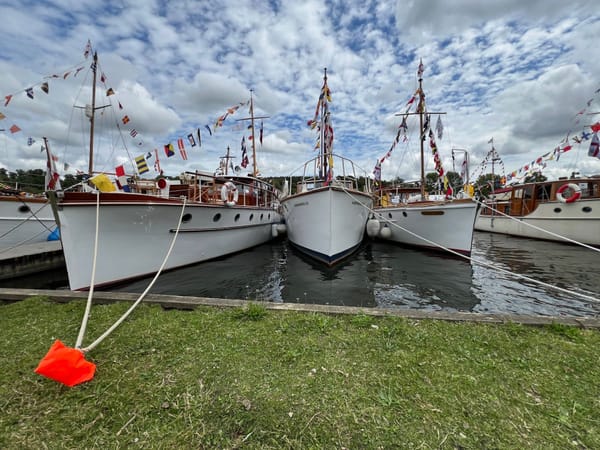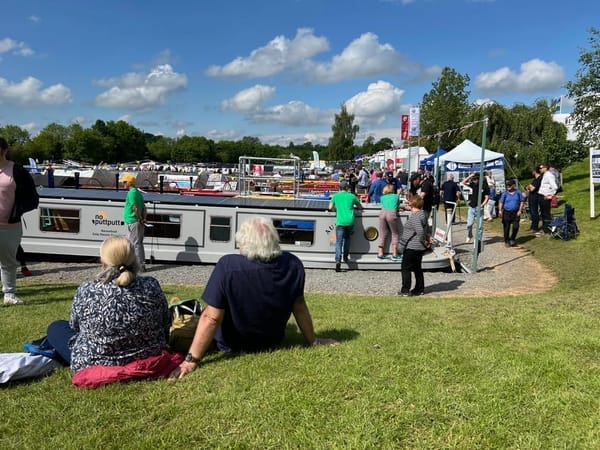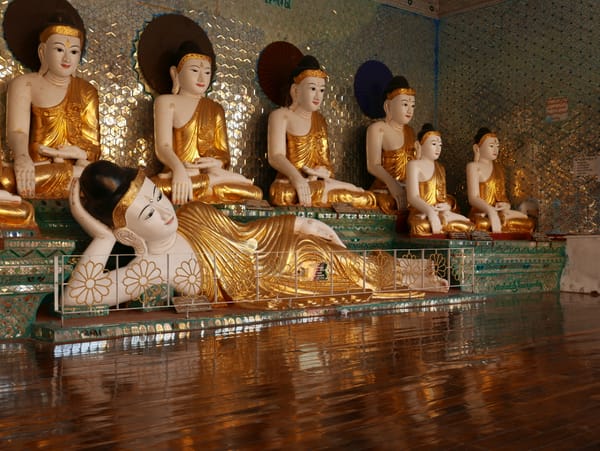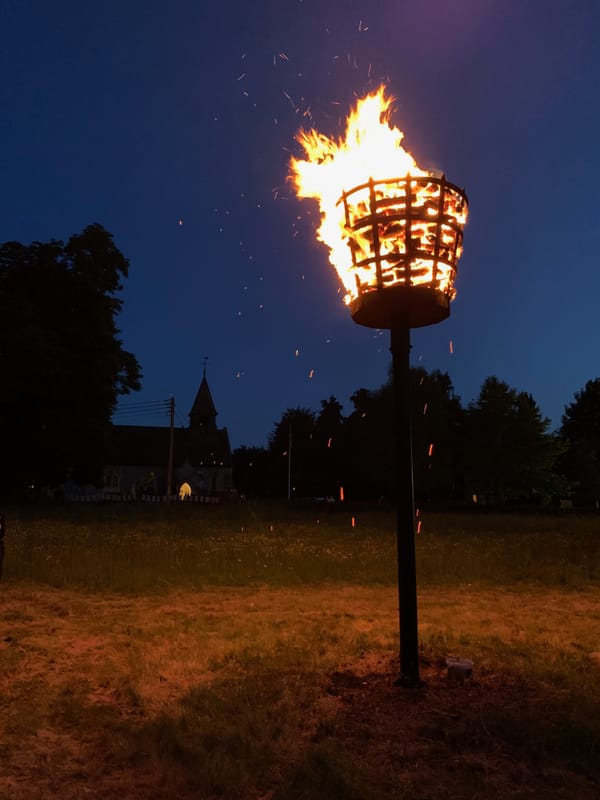Cambodia — Wat Thmey Killing Field Memorial, Siem Reap, Cambodia
A chilling visit
September 2015
The Wat Thmey Killing Field Memorial is a sobering reminder of what happened in Cambodia between 1975 and 1979.
From 1975 to 1979, an estimated 1.7 million people, over 25 per cent of Cambodia's population, died due to famine, disease, and mass executions at the hands of the Khmer Rouge (Democratic Kampuchea (DK)). The victims were intellectuals, professionals, and anyone who opposed the Khmer Rouge regime.
The conflict between the Khmer Rouge and the Lon Nol regime from 1970 to 1975 caused people to move to Phnom Penh, the capital of Cambodia. This caused the population of the capital to increase to several million.
When the Khmer Rouge entered Phnom Penh on 17 April 1975, they forcibly removed people from the city and back to the countryside. The people were told to “go back to their birthplace”, and most had to leave on foot. These people were referred to as "New People" or "17 April People," while people who were loyal to the regime were called "Base People." The “New People” were often targeted by the Khmer Rouge soldiers.
Close to a million people left Phnom Penh, and around 3,000 died on the journey. People were also moved from other large towns and cities and between regions of the country.
From September 1975 and 1977, numerous people were moved from the central and southwest parts of the country (provinces such as Kandal, Kampong Thom, Takeo, Kampong Speu, Kampong Chhnang and Kampong Cham) to Siem Reap and Preah Vihear. And from the central and southwest parts of the country to the Northwest region (Battambang, Pursat and Banteay Meanchey provinces). The people were moved by train, civilian and military trucks, boats, oxcarts, tractors and on foot. All the movements were supervised by the Khmer Rouge, with the people being transported in crowded conditions with little or no food and water.
At the Wat Thmey Killing Field Memorial, I read the testimony of Leng Yun, who described how she and her family were forcibly evacuated from their home in Phnom Penh in 1975. She ended up on a farm with a working day from 2 am to 6 pm. She was fed a very thin gruel, which they tried to supplement with some edible plants. Leng Yun witnessed several of her family being taken away to be executed, including her husband. The Khmer Rouge would just take people away to the Killing Fields.
In June 2003, the Royal Government of Cambodia (RGC) and the United Nations (UN) agreed to prosecute the senior leaders of the Democratic Kampuchea who were responsible for the crimes committed between 17 April 1975 and 6 January 1979.
An Extraordinary Chambers in the Courts of Cambodia (ECCC) was established, and over 4,000 civil parties and over 6,000 complainants stepped forward to participate.
The Wat Thmey Killing Field Memorial is located on the site of a former mass grave and commemorates the victims of the genocide. The memorial is part of a network of memorials at former mass graves across Cambodia.
I found the memorial to be a simple yet powerful place. The main feature was a stupa (a Buddhist monument) that contained the remains of some of the victims. There were also several small shrines, memorials, and a museum that told the story of the genocide.
The site was under construction when I visited, yet there was already some chilling and disturbing testimony on the information boards.
However, the display of human skulls brought home the horrors that must have occurred at this site. I'm not an expert on human anatomy, but judging by the state of teeth and the sutures between the skull plates, I would guess that I was looking at skulls from a wide range of ages, and many of them, even to my untrained eye, showed signs of meeting a violent death.
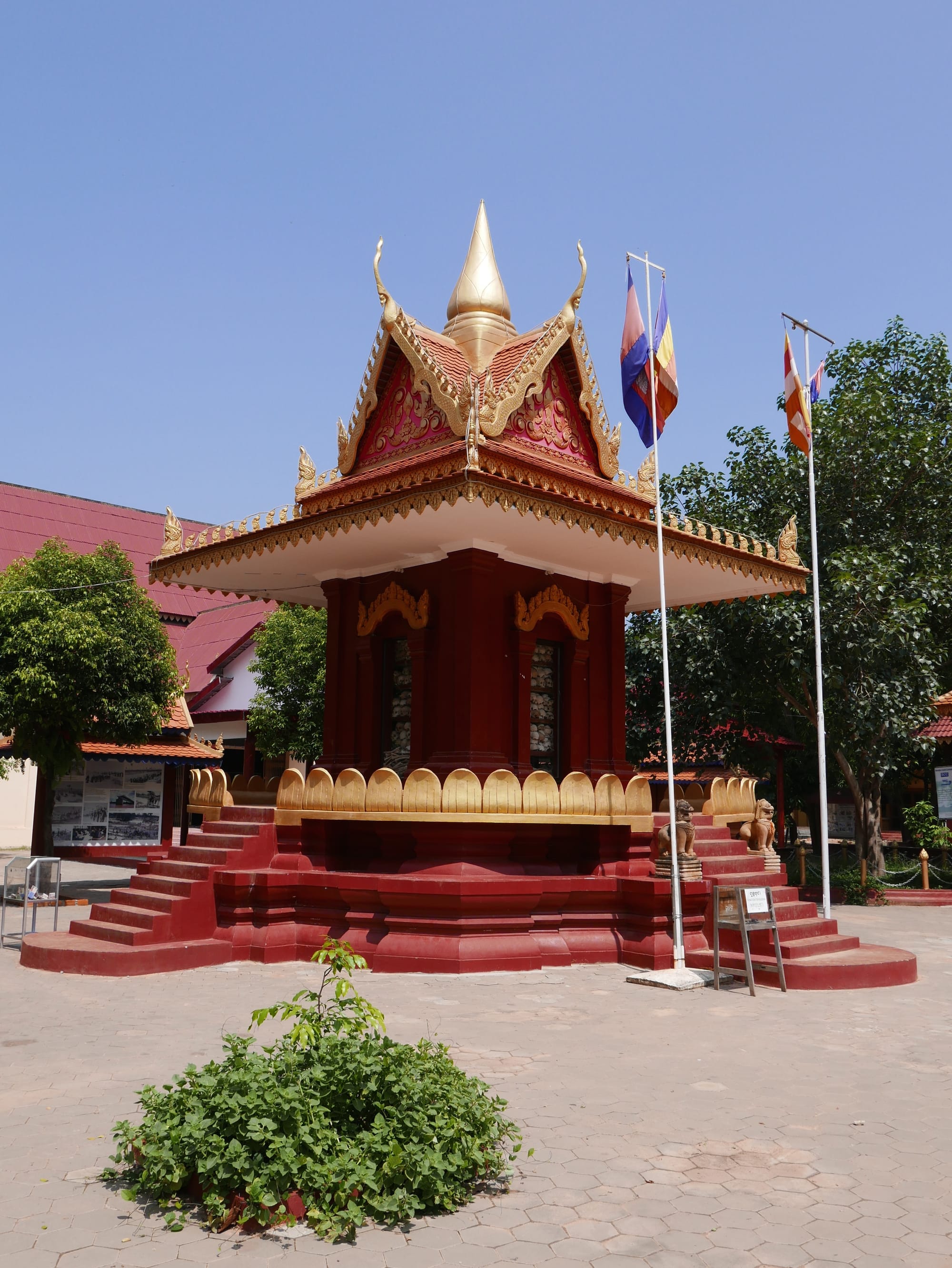
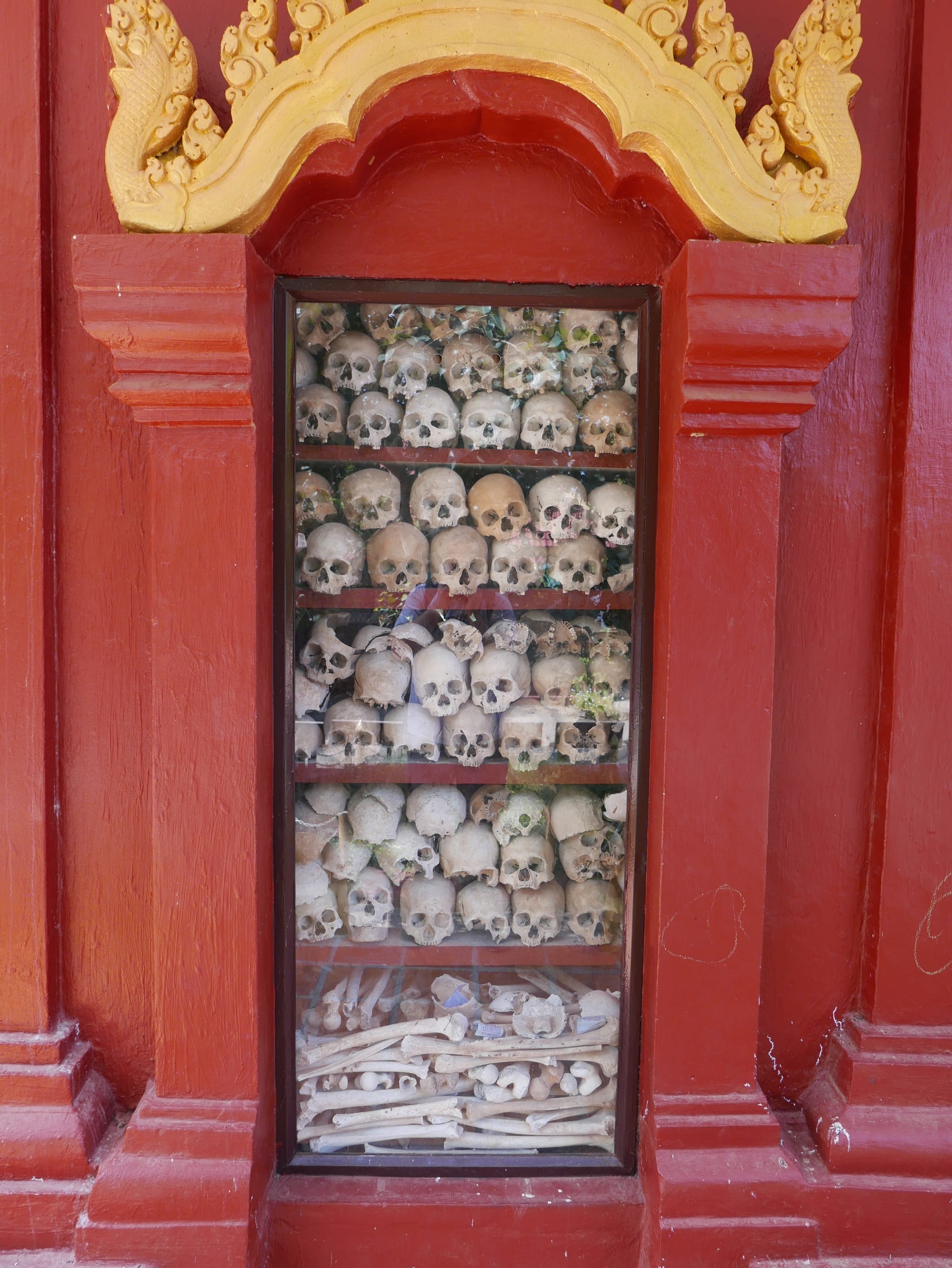
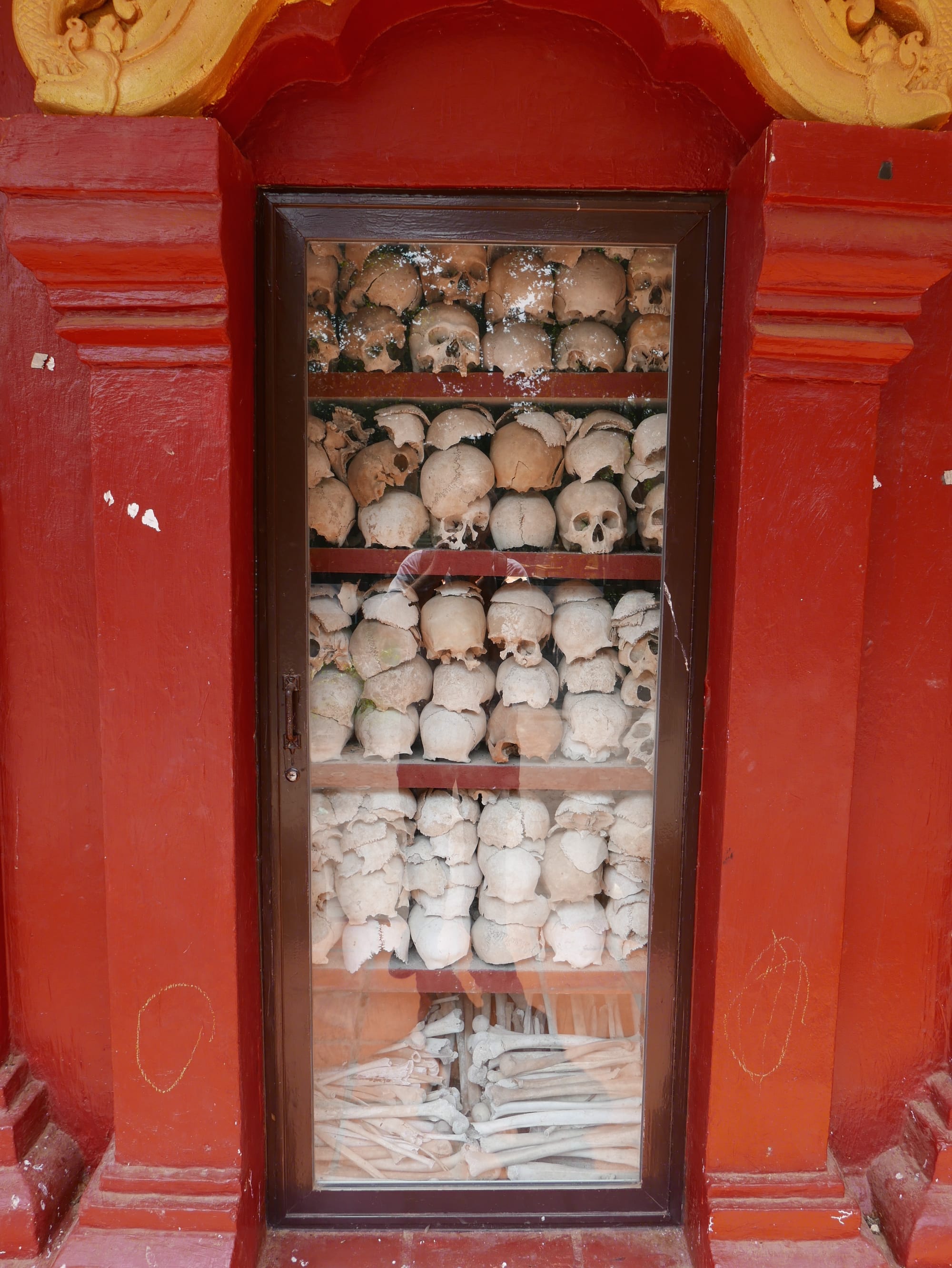
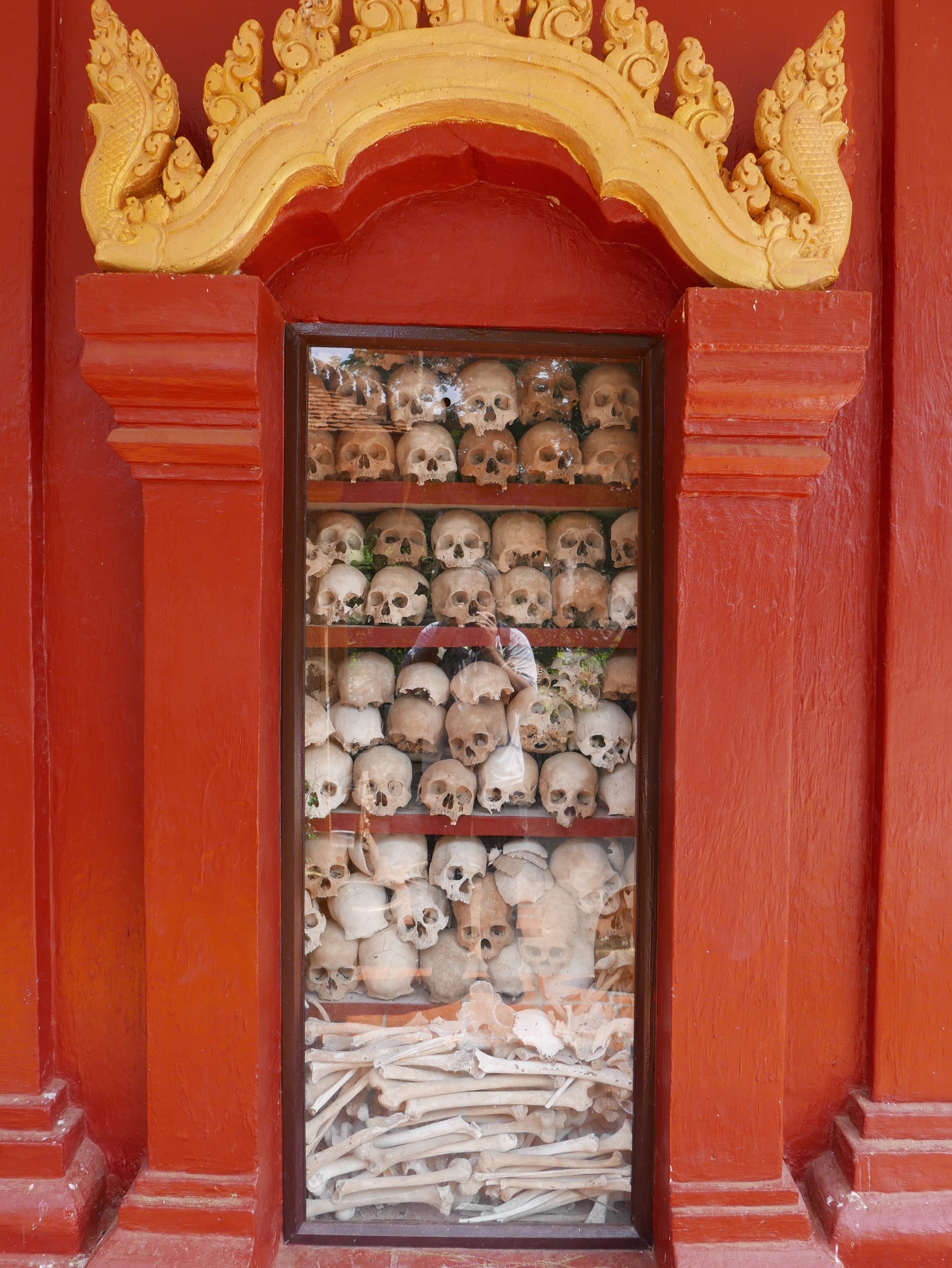
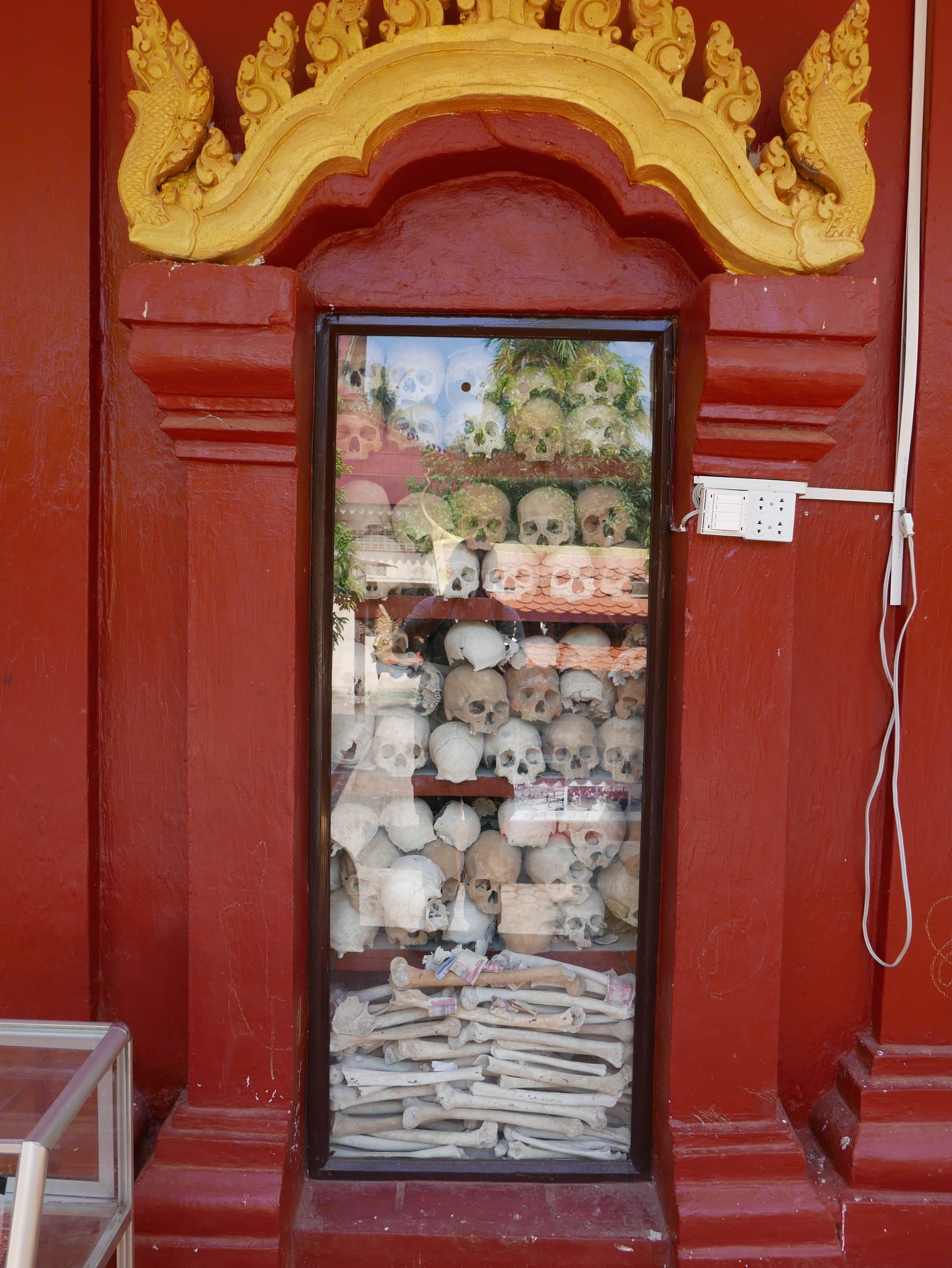
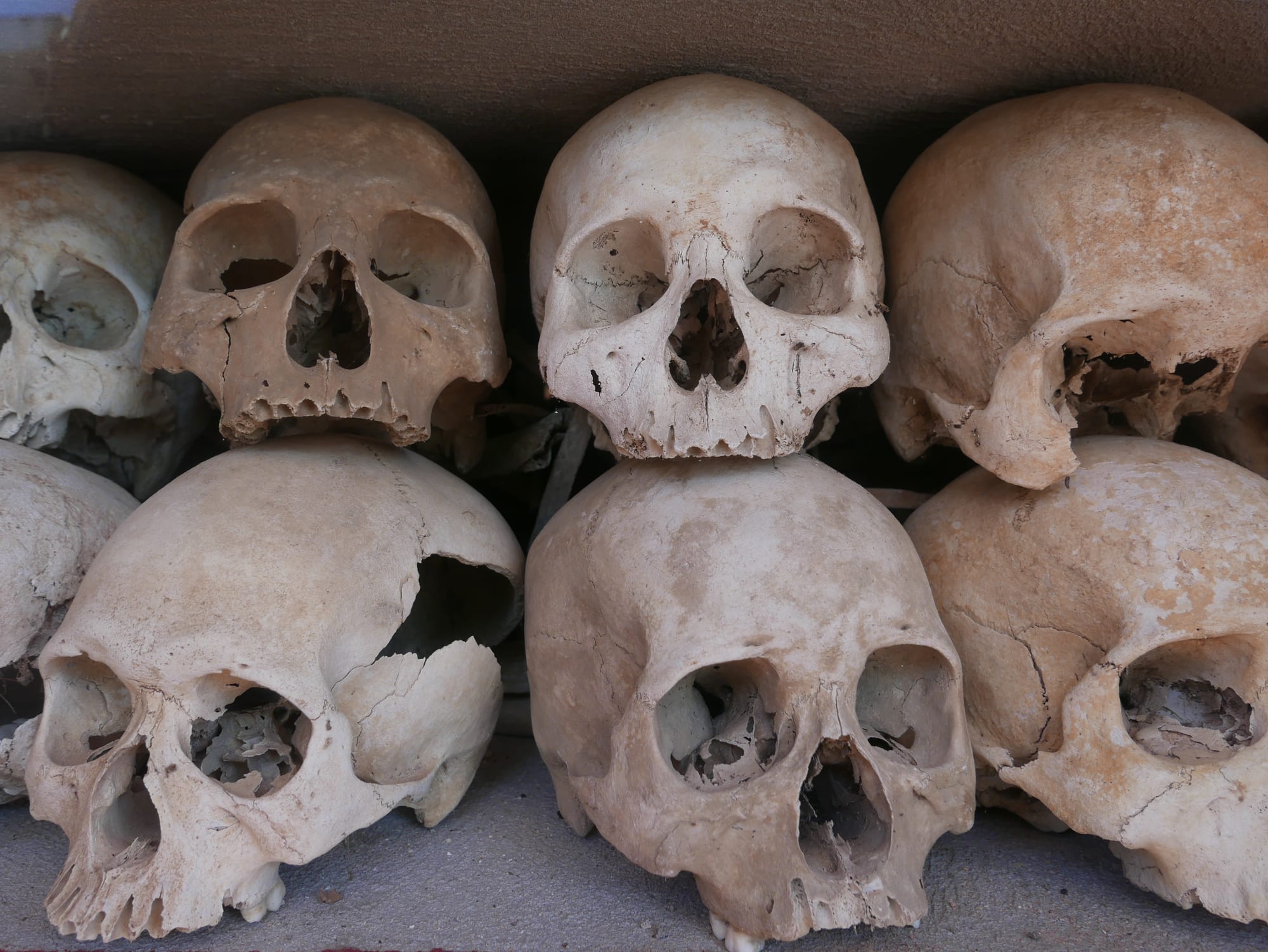
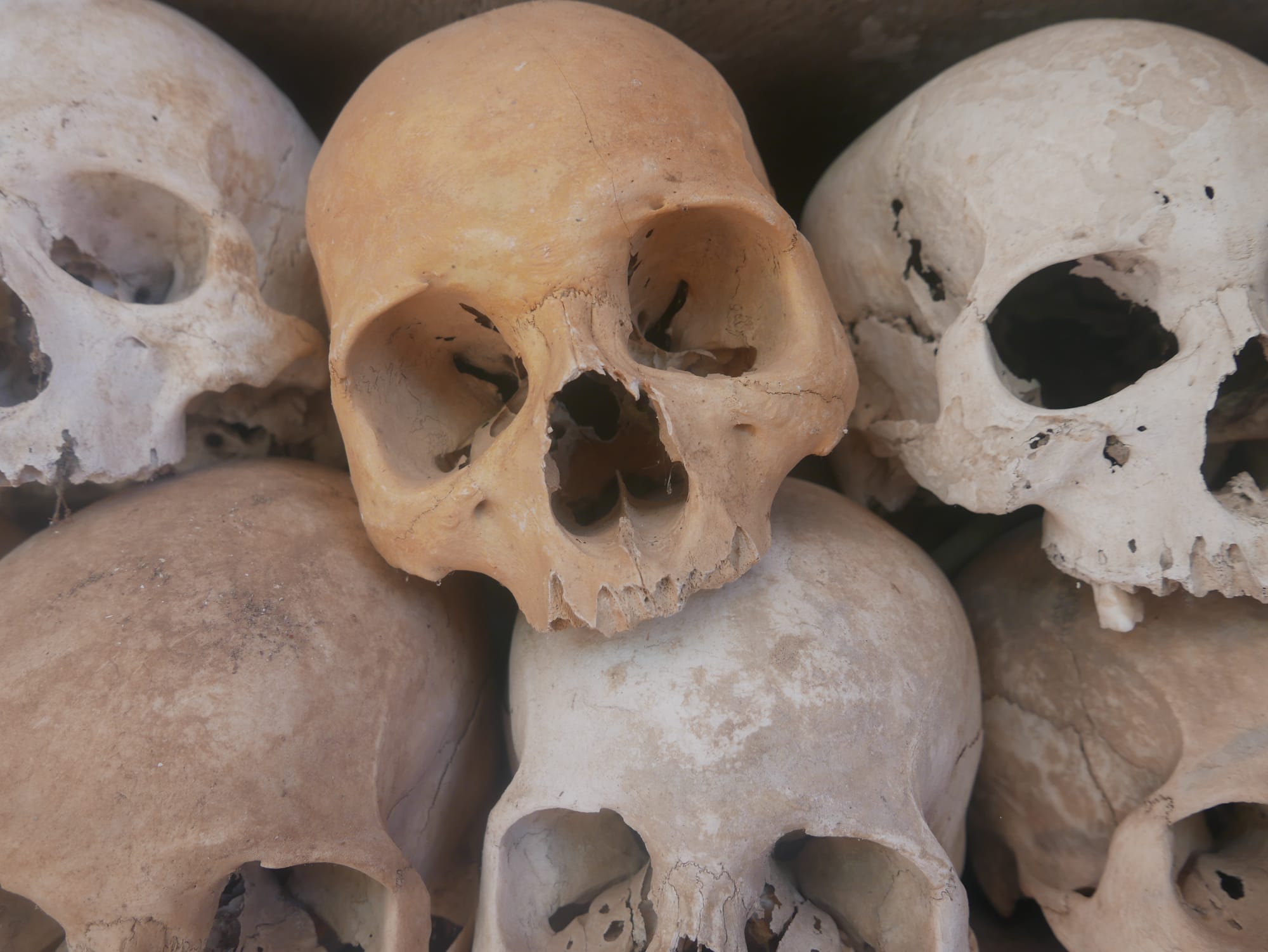
There was also a 'photographic' exhibition in a small building in one corner of the site. The exhibition contained a collection of paintings that told the horrific story of the Khmer Rouge and the Killing Fields.
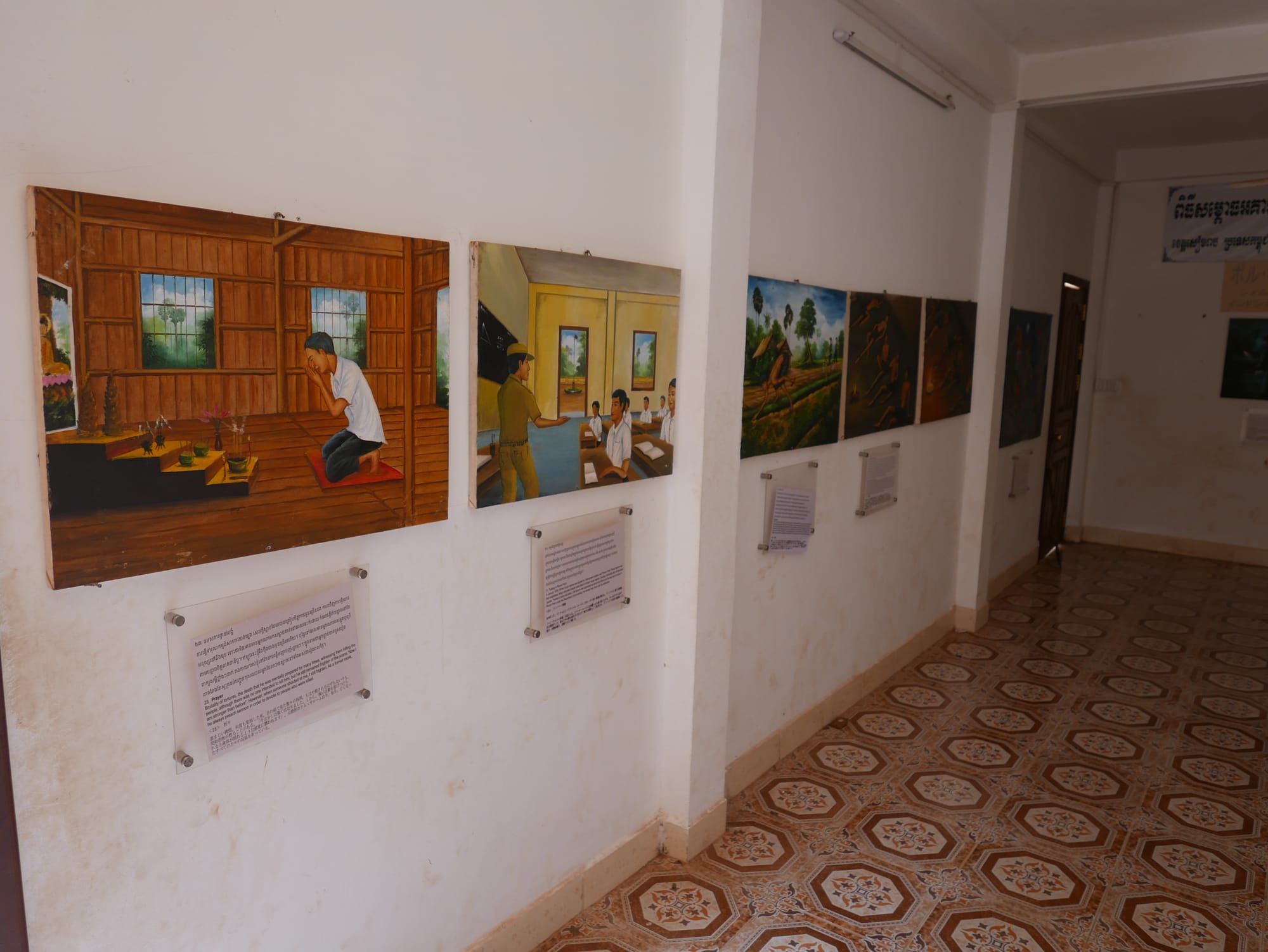
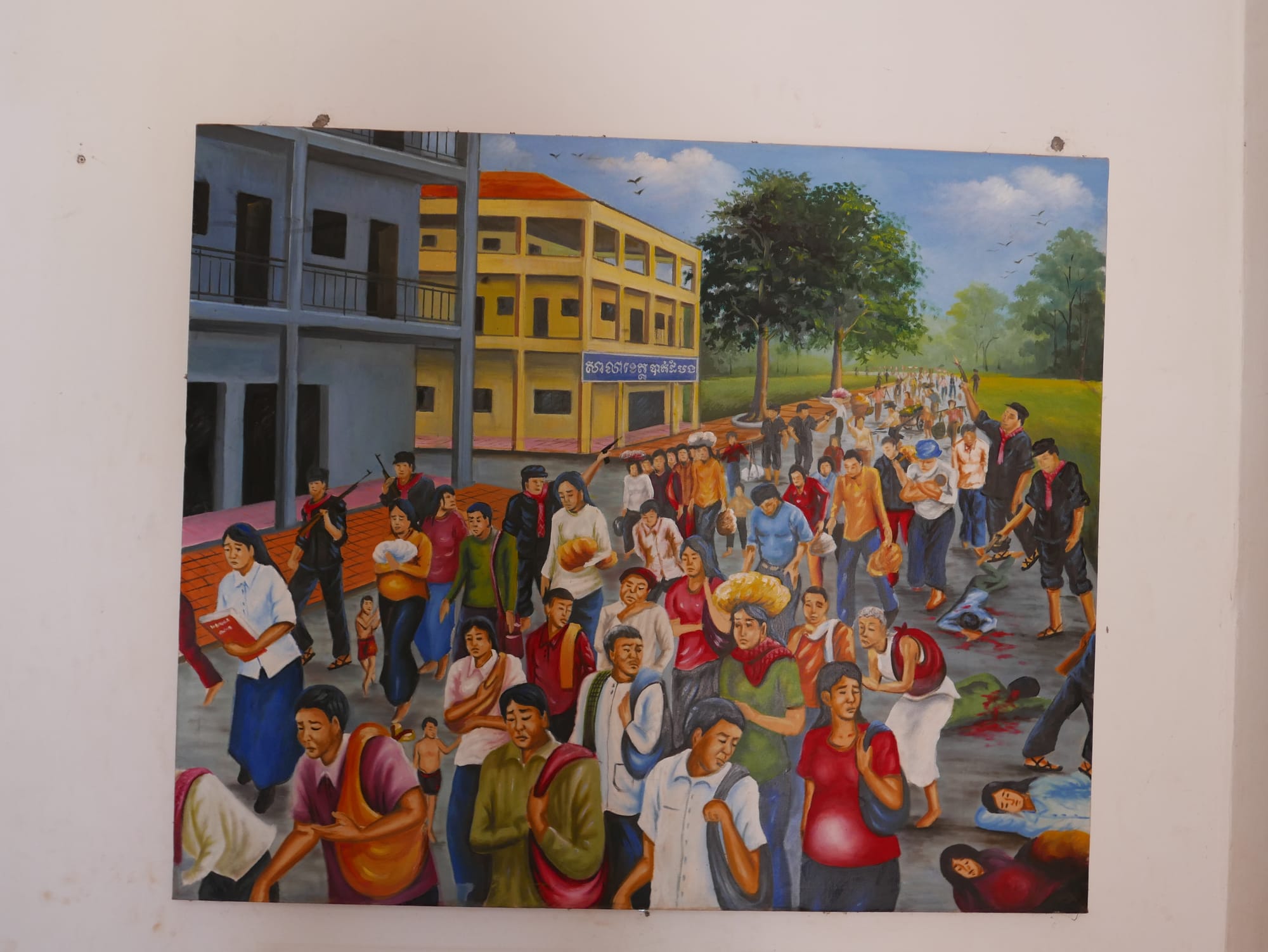
And there was a temple on the site where people could reflect and make offerings.
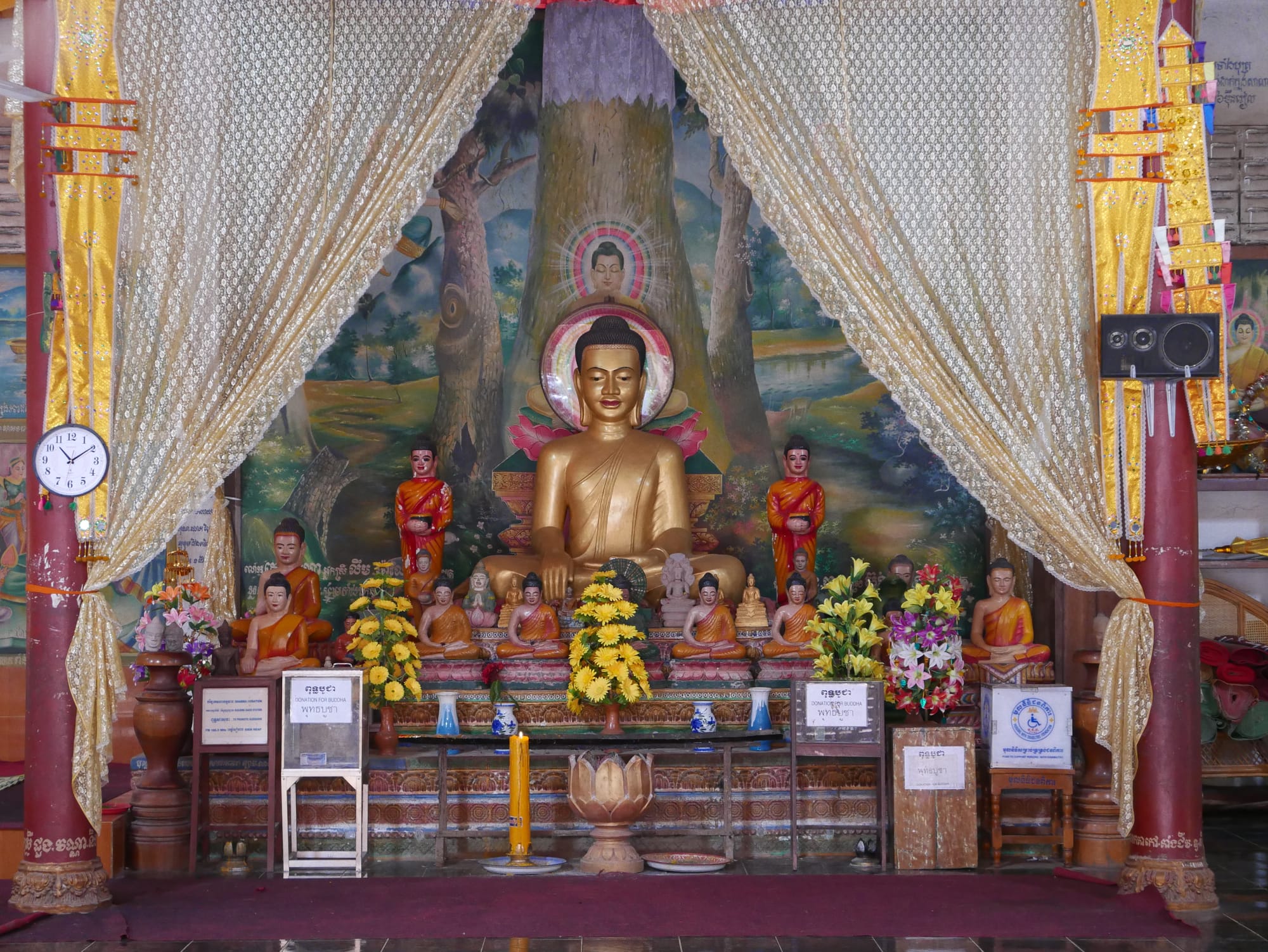
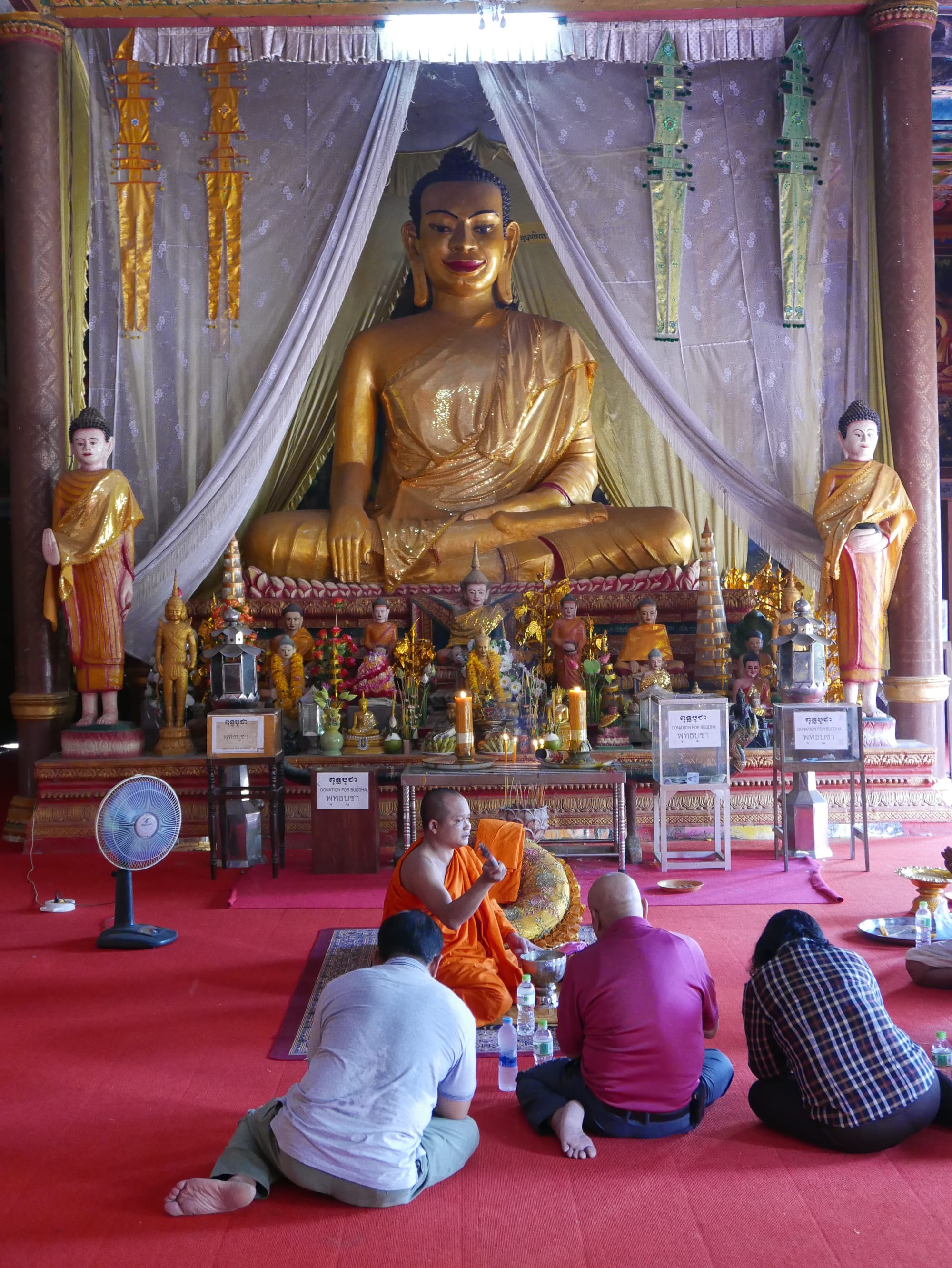
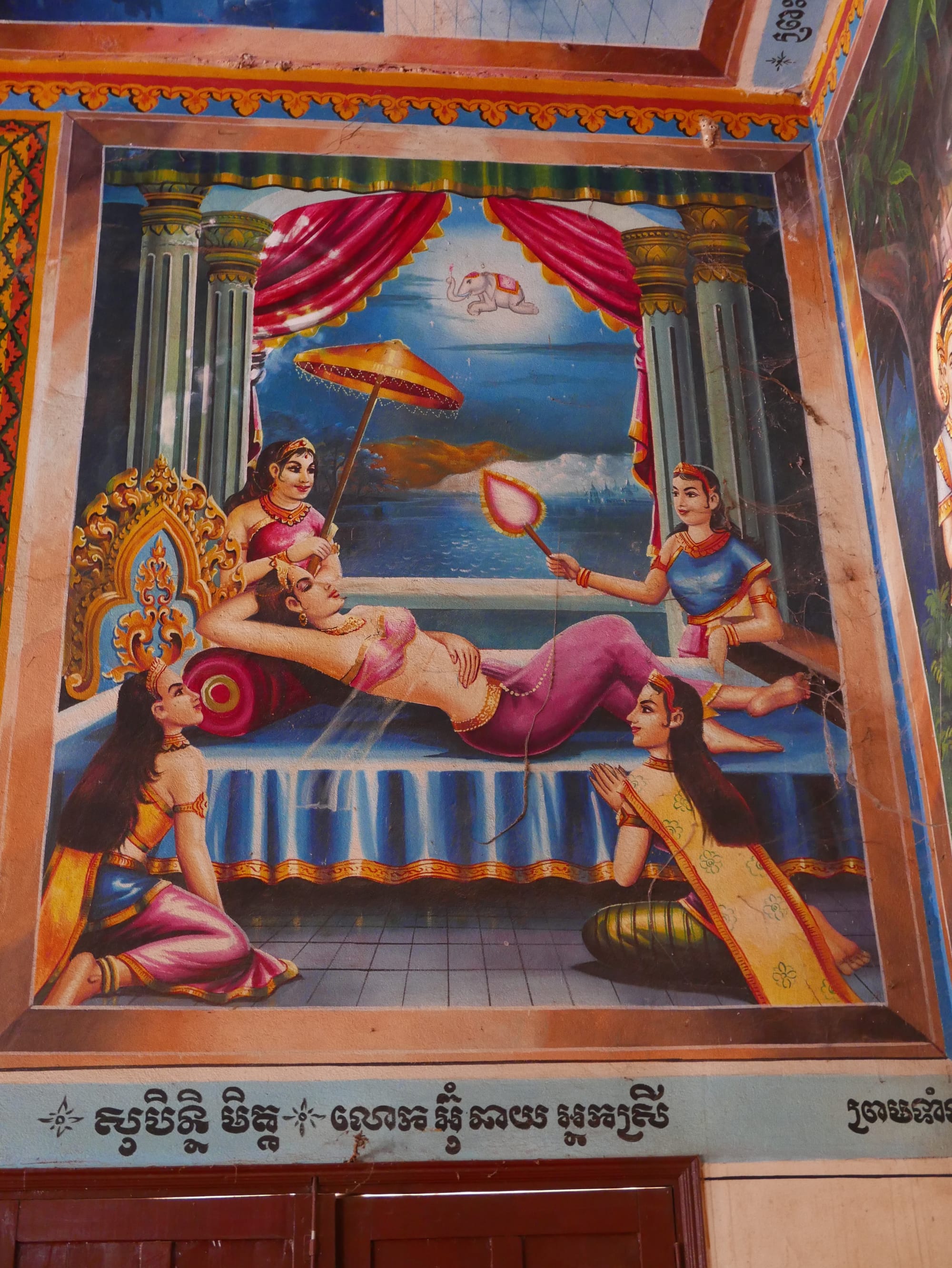
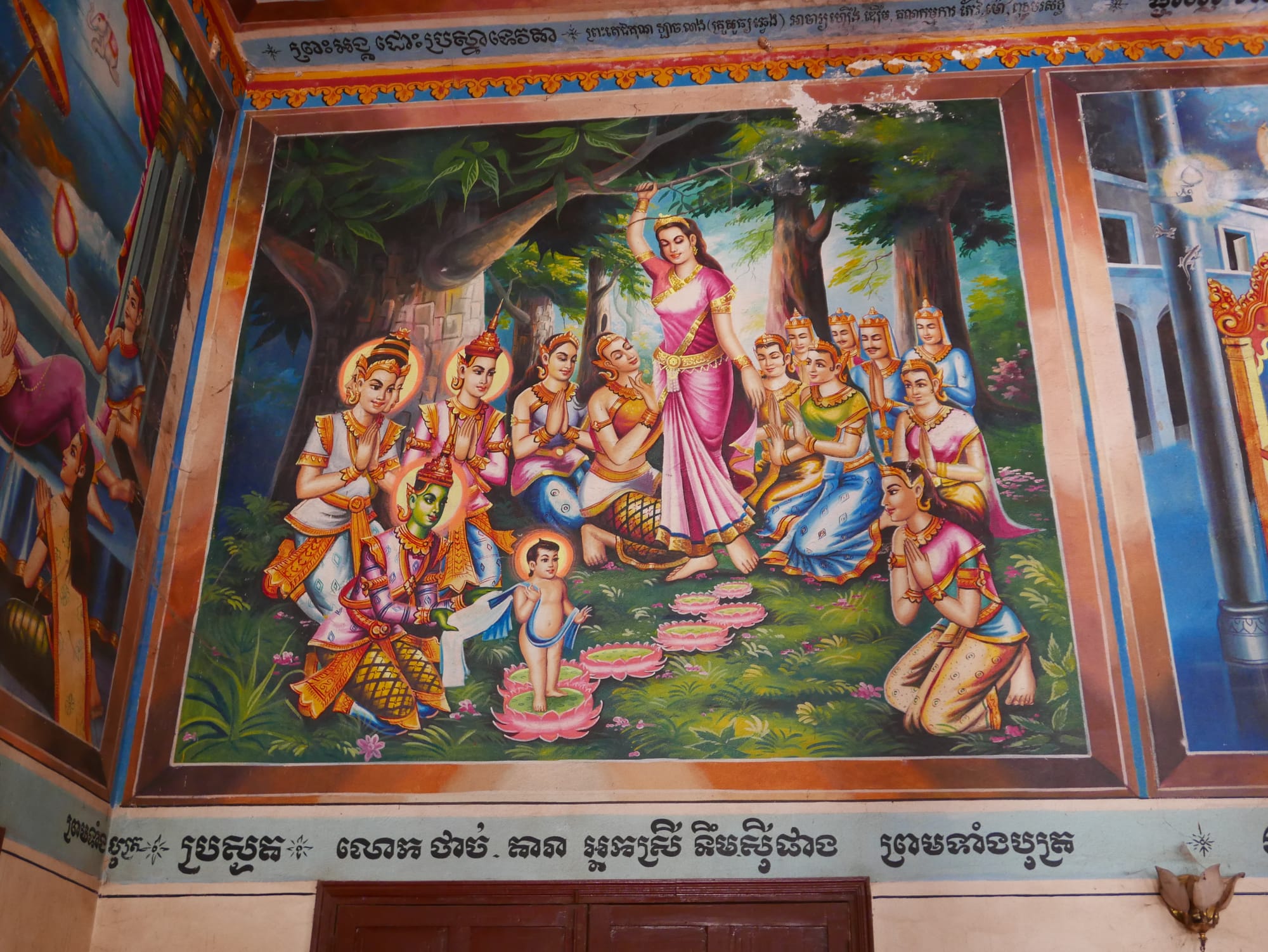
My visit to the Wat Thmey Killing Field Memorial was a harrowing experience. It was shocking to read the testimonies of the survivors and to consider what they must have seen and experienced and what must have happened at the site when the Khmer Rouge was in power.
Foursquare: Wat Thmey Killing Field
